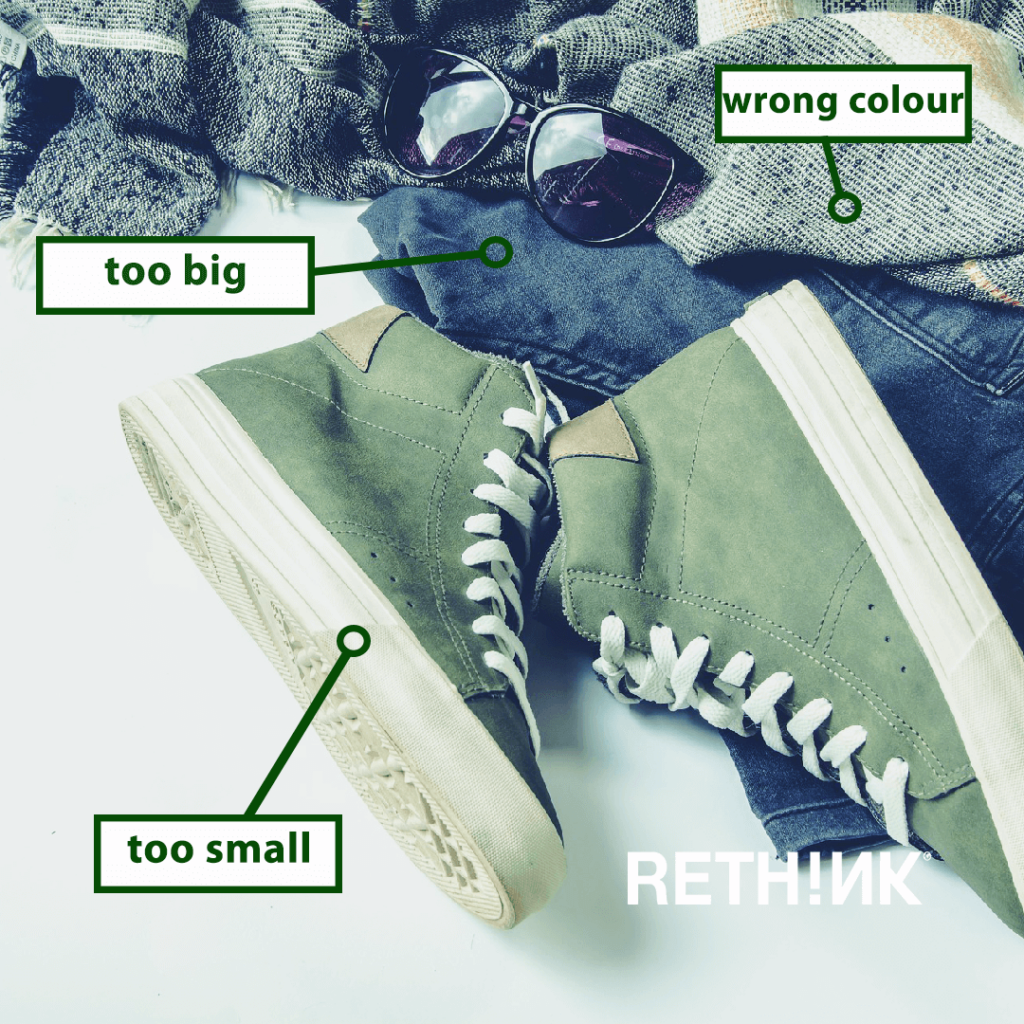Online shopping. We can do it anytime—when we watch TV, on the subway, maybe even at work. It goes smoothly and quickly—maybe too fast. Can we take the time to carefully think about what we need before “clicking” home another shirt?

According to the employer Svensk Handel, clothes and shoes are the most popular goods to shop for online ![]() , and during the first quarter of 2019, sales in e-commerce with fashion goods grew by 13 per cent
, and during the first quarter of 2019, sales in e-commerce with fashion goods grew by 13 per cent ![]() . Many e-commerce companies offer free shipping and returns, making it easy to impulse buy clothes that we do not really need or are not even sure we want. Once we get the garment home, it may not meet expectations. What do we do? Do we send the garments back, or do they stay in the closet? No matter what we do, it has negative consequences for the environment.
. Many e-commerce companies offer free shipping and returns, making it easy to impulse buy clothes that we do not really need or are not even sure we want. Once we get the garment home, it may not meet expectations. What do we do? Do we send the garments back, or do they stay in the closet? No matter what we do, it has negative consequences for the environment.
There is a clear link between the growing online trade and increased truck traffic ![]() . After several years of reduction, carbon dioxide emissions from road transport are now growing again. According to the Transport Administration
. After several years of reduction, carbon dioxide emissions from road transport are now growing again. According to the Transport Administration ![]() , the increased truck traffic is the main reason for the increase.
, the increased truck traffic is the main reason for the increase.

What happens when we return clothes?
Surveys show that we tend to buy more than we plan to keep ![]() . For example, customers buy the same garment in several different sizes to be able to send back those that do not fit. We return every fifth garment purchased online. Many do not realise that clothes sent back to the dealer can be transported hundreds of miles. The dealer often sends returned garments to, for example, Estonia or Poland, where they check and repack the garment and send it back to the Swedish retailer. This extra trip will, of course, have significant environmental consequences through increased transport and thus increased carbon dioxide emissions.
. For example, customers buy the same garment in several different sizes to be able to send back those that do not fit. We return every fifth garment purchased online. Many do not realise that clothes sent back to the dealer can be transported hundreds of miles. The dealer often sends returned garments to, for example, Estonia or Poland, where they check and repack the garment and send it back to the Swedish retailer. This extra trip will, of course, have significant environmental consequences through increased transport and thus increased carbon dioxide emissions.
According to an article from the BBC ![]() ,they even throw away some returns. It can sometimes be cheaper for companies than handling all the logistics for returning garments. Some companies need more technology to take all the different types of returns. Proper technology can cost a lot.
,they even throw away some returns. It can sometimes be cheaper for companies than handling all the logistics for returning garments. Some companies need more technology to take all the different types of returns. Proper technology can cost a lot.

And those who are not returned?
It is not uncommon that we order clothes and leave them lying around. We sometimes forget, and then the return deadline exceeds. Almost a third of the clothes bought are never used, according to, in this case, the Swedish Society for Nature Conservation ![]()
What can you do?
- Think one more time, do you need this particular garment? Remember the garment’s climate footprint. It is not visible, but it is there. You may want to spend your climate budget on something else.
- Of course, you should always return garments if something is wrong with it. You should inform companies if they sell clothes of poor quality or with defects.



